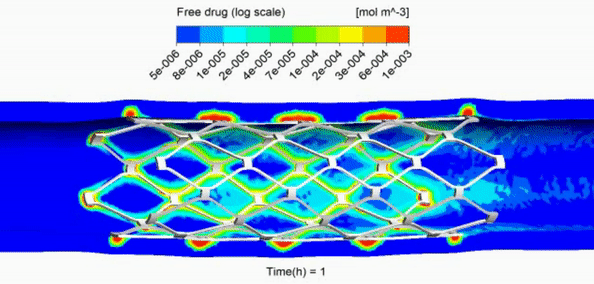Farhad Rikhtegar Nezami, Abraham R. Tzafriri, Elazer R.Edelman. ‘Transient subject-specific drug delivery in stented arteries: physics-based simulation of controlled release and retention.’

Summary: Drug-eluting stents are the mainstay therapy for obstructive arterial disease, yet further innovation is hampered by cost and lack of experimental techniques. In silico models, akin to what developed here, offer flexible and readily available tools to address these issues, enabling determination of the spatio-temporal variation of bound/unbound drug concentration in the arterial wall, not achievable through animal models or human trials. Simulation outcomes demonstrate that strut appostion considerably rises the free drug concentration in vascular tissue. However, drug retention and receptor saturation quickly plateau the concentration of bound drug in the entire volume of the vasculature at the intervention segment. Hemodynamic disruption by struts and drug pooling at the site of blood recirculation impose an asymmetric pattern of drug delivery increasing the mural concentration distal to stagnation sites. This, as well, saturates the drug receptors well beyond the site of intervention highlighting the importance of biological flows in drug transport.
Conclusion: Physico-chemical characteristics of depleted drug play a critical role in drug dynamics. Our developed module is an invaluable tool to design and develop emerging devices and contribute to regulatory oversight and evaluation of clinical performance.
Presented at the 9th International Bio-Fluid Mechanics and Vascular Mechano-Biology Symposium, February 13-16, 2020, Tucson, Arizona.



